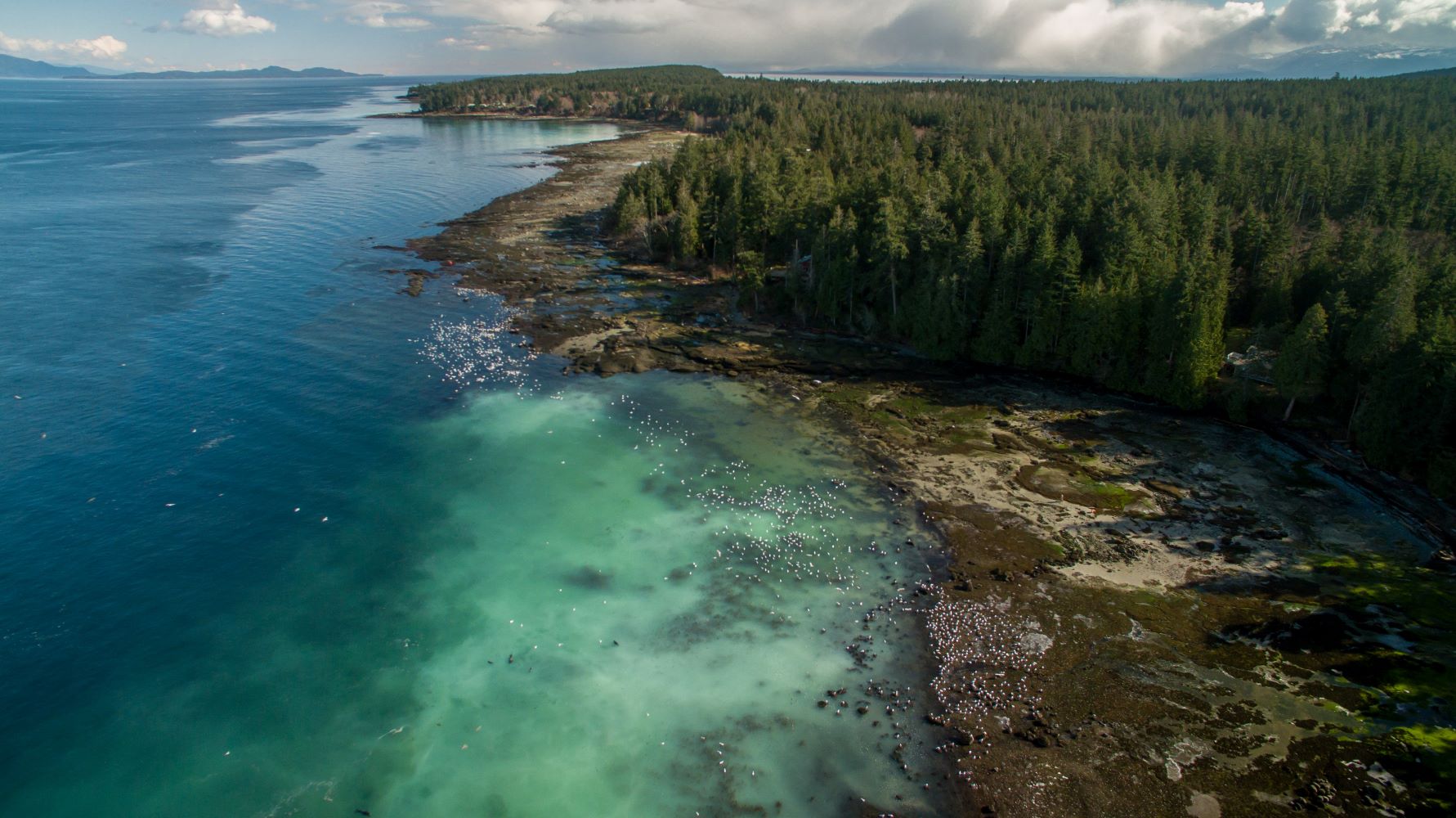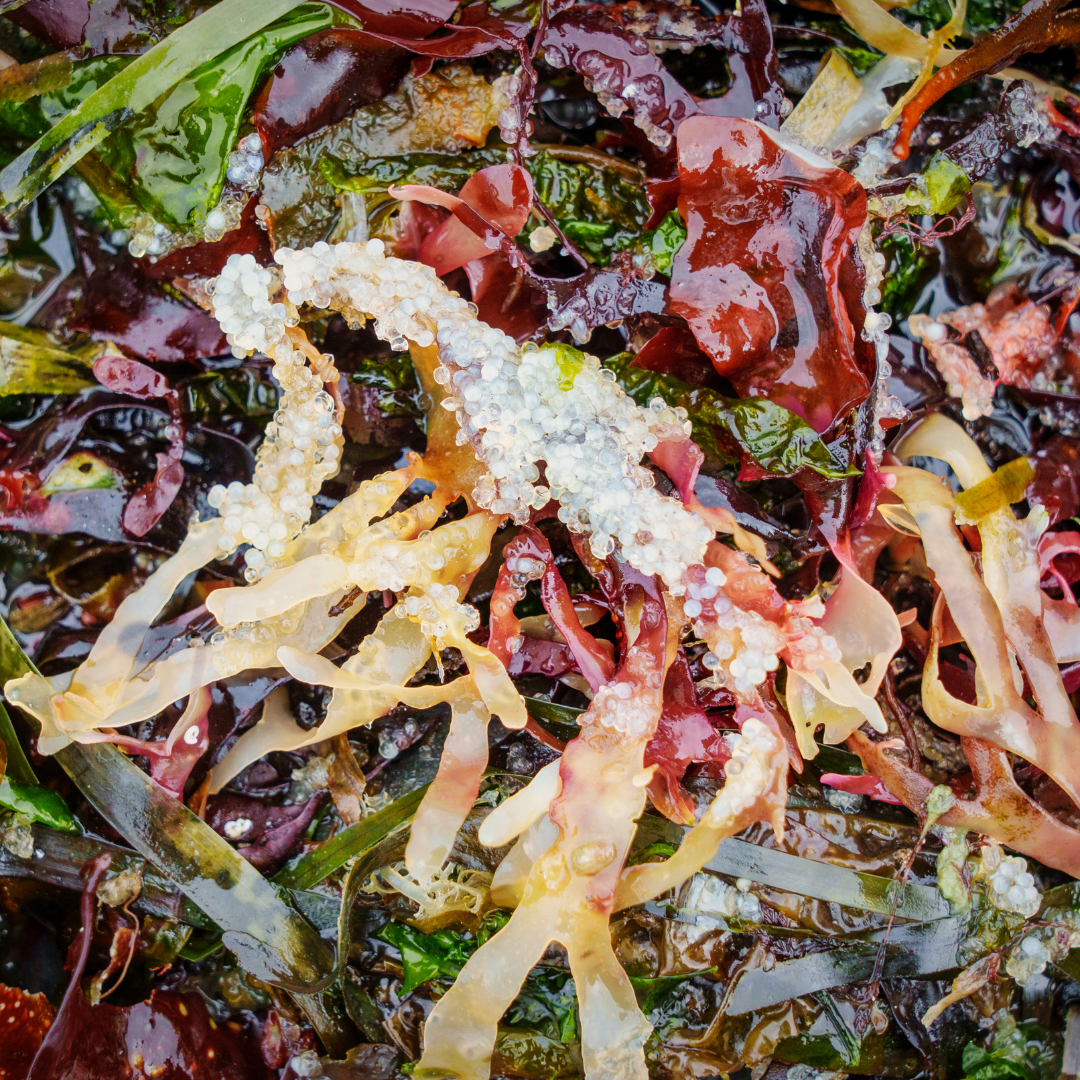Herring on the Side of Caution: Climate Change and Spawning Shifts

As winter turns to spring, Pacific herring return to nearshore waters to spawn, coating rocks, kelp, and hemlock branches with their sticky roe and turning the dark waters a vibrant milky teal. The annual herring spawn is a critical event that many species rely on in coastal ecosystems. Whales, sea lions, and salmon chase the glittery fish beneath the surface, sea birds dive after them from above, and wolves, bears, and people enjoy the roe along the shore. As a keystone species of marine ecosystems, Pacific herring are an important component of Alaska Native and British Columbia's First Nations culture and subsistence harvest, and a valuable commercial fishery. The timing of the herring spawn is seen as a critical seasonal signal, heralding the changing of the seasons, the arrival of migratory animals, and an indicator to begin or end harvests of other species. Since the timing of this spawn plays such a critical role in seasonal cycles, it is important to understand what will happen to the herring spawn in the face of a changing climate.
ACRC researcher John Harley recently published a study in Marine Ecology Progress Series that investigates how local environmental conditions and large-scale climate patterns influence the timing of herring spawn along the coasts of Southeast Alaska and British Columbia. The research combined spawn survey data collected from 1951 to 2022 with sea surface temperature anomalies, tidal flux, and teleconnection index data (e.g. Pacific Decadal or El Niño Southern Oscillation) to model variations in herring spawn timing. With the model, the team projected future anomalies in spawn timing based on forecasted changes in sea surface temperature due to climate change through 2100.
The study found that rising sea surface temperatures (SSTs) and associated large-scale climatic patterns are generally pushing herring to spawn earlier. However, these changes in herring spawn timing varied significantly across regions. For example, the waters along the Inside Passage could see herring spawning approximately two weeks earlier by the end of the century, while ecosystems located on the outer coast of Southeast Alaska may see changes in spawning timing of only a few days.
Harley and co-authors postulate that even small shifts in spawn timing could disrupt the synchronization between herring and the species that rely on them, potentially leading to mismatches in food availability. This asynchrony could ripple through the ecosystem, affecting the survival and reproduction of dependent species such as seals, seabirds and whales. Predators may even change their migration patterns as they search for other food sources or herring populations in regions that display smaller shifts in spawn timing.
While it is difficult to predict exactly what will happen to herring populations located around Southeast Alaska in the face of climate change, this study provides a glimpse into the general trend towards earlier herring spawning dates that many communities will likely observe, and provides a solid base for future research that will impact ecosystems, subsistence communities, and commercial fisheries alike.
Harley is currently working on additional research into therelationship between herring spawn timing and harmful algal blooms that can result in paralytic shellfish toxin events. The herring spawn has traditionally been used as an indicator of when harmful algal blooms may begin to occur, and shellfish may no longer be safe to harvest.
“Both of them are driven to some extent by sea surface temperature, so in colder years, the herring will spawn later and these harmful algal blooms will occur later,” explains Harley. “Phenological indicators, where you are using something as a timing cue for something else, can become asynchronous in climate change. As the ocean gets warmer in the coming decades, the herring spawn timing is going to potentially get a little bit earlier, as shown in this study, 10 days on average across the entire range. What we are envisioning, is that harmful algal blooms will probably be occuring before the herring spawn by the end of this decade.”
Continued monitoring and research will be crucial in understanding these evolving dynamics and their implications for marine ecosystems and coastal communities in the years to come.

Photo: Herring roe coat a piece of kelp that washed ashore